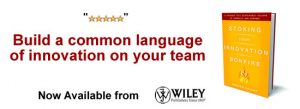To innovate or not to innovate. An age-old conundrum in the new pandemic normal.
When Katie Kostek and her team first put together a virtual retirement education program in 2019, it was one of the first of its kind and soon became one of the more sought out education programs in the roster. Fast forward to 2020, with the pandemic, demand soared through the roof.
So what does one do when innovation becomes par for the course in the new virtual & remote normal? Moreover, how do you innovate when remote work is causing an acceleration in business model change? Further, is it even necessary to innovate when the need is organic and at its peak? Dyed in the wool savants and innovators would say yes – this is the perfect time; after all, don’t peaks attract more competition? On the opposite end of the spectrum, laggards would probably say let’s focus on business as usual and meeting the demand.
We decided to follow a more middle of the road approach to innovation in the case of some of our retail clients to anticipate and mitigate customer concerns. Meet the demand head on and supplement with much needed one on one sessions. This innovative adaptation took a change in mindset and sacrifice. A mindset change for an industry used to the efficiency of group meetings; and sacrifice on the part of our virtual teams who are sometimes compensated by the numbers they train. But in these times of uncertainty, our colleagues at the front lines like Behnaz Gerami-Moayed, Katie Petrunti, and Nick Ashford stepped up without a care for the cost of what may seem like small but unquestionably impactful innovation from an end user perspective.
With some of our larger clients, we are going to implement more fundamental innovation. Taking our Mutual Match program which essentially is a proprietary algorithm that serves as matching service for consumers with our virtual retirement education specialists; and marrying it up with an out of the box scheduling tool so we can scale our virtual program and offer consumers more personalized virtual education at a time when we can at least be personal if not up close.
All this said, what then is the verdict on how we feel about innovating or not during Covid-19? From a utility perspective, it has been answered by the benefits expressed by consumers who experienced the human touch digitally. If we keep humanizing innovation, it becomes less of a conundrum and more of a solution.
NEVER MISS ANOTHER NEWSLETTER!
LATEST BLOGS
The Evil Downside of Gift Cards
This past holiday season I saw probably one too many articles trumpeting the value of gift cards to retailers and how they are a great thing for retailers. My skeptic side starts coming out as I see article after article appear, and I have to start asking “Is the increasing prevalence of gift cards as a holiday gift (primarily Christmas) a good thing for retailers?”
Read MoreWhy the iPhone will not succeed – Yet
The new Apple iPhone is set to launch on June 29, 2007 and the press and investors are making it a darling. Investors have run Apple’s stock price up from about $85 per share before its announcement to $125 per share recently, but the iPhone still will not succeed – at least not yet.
Read More


